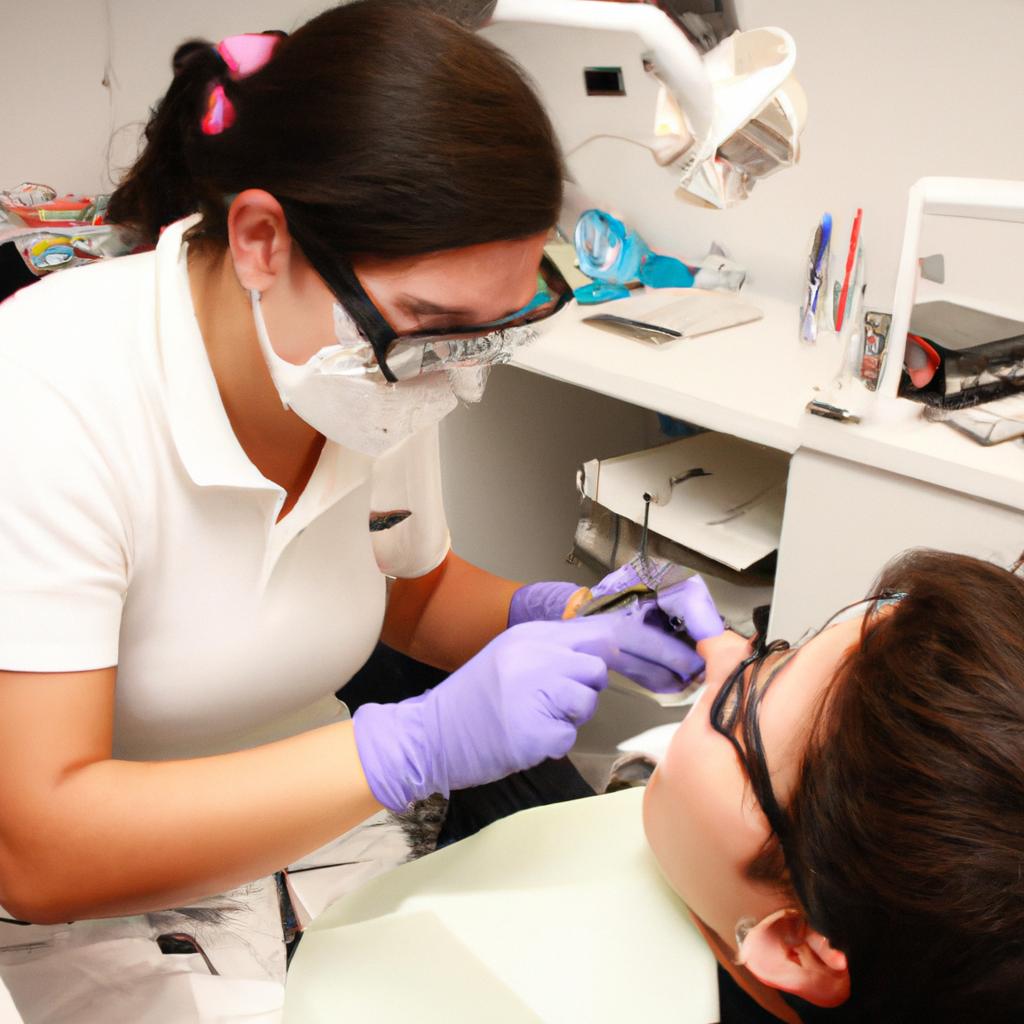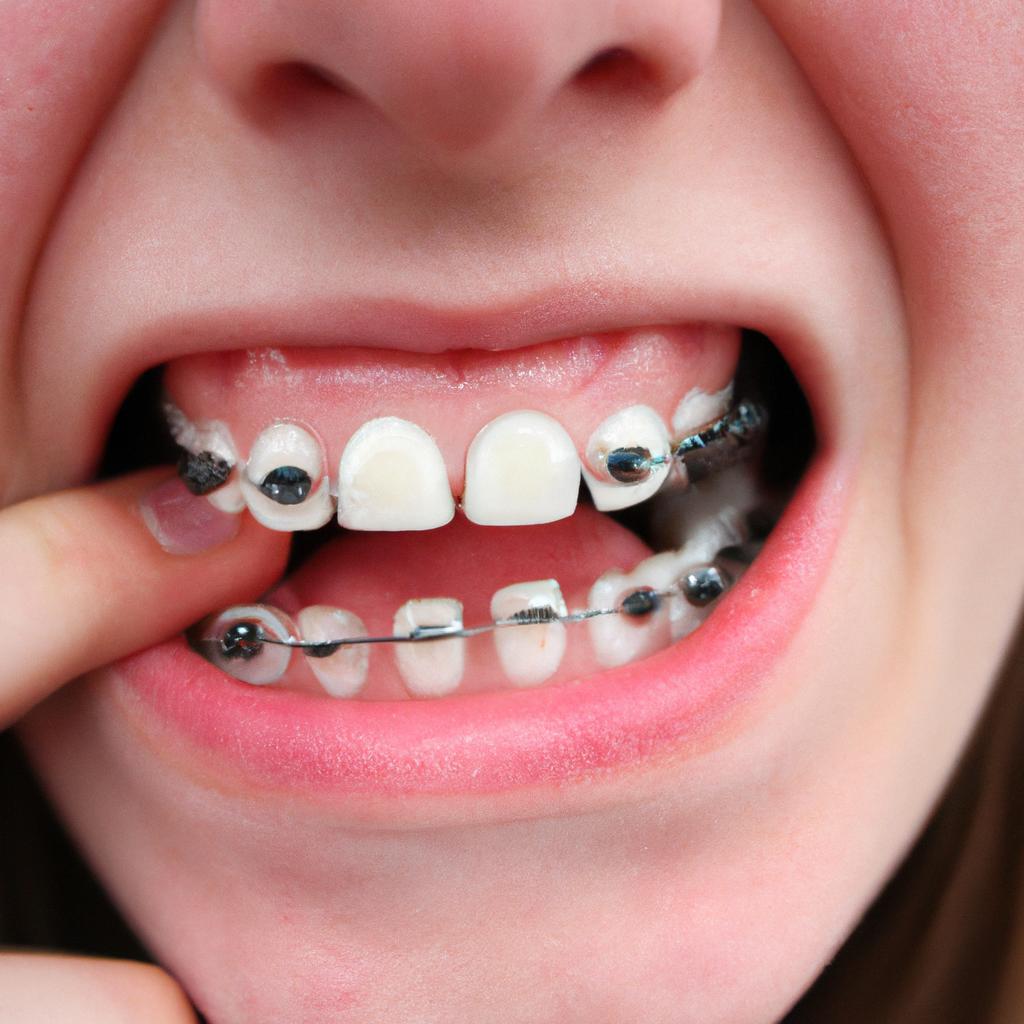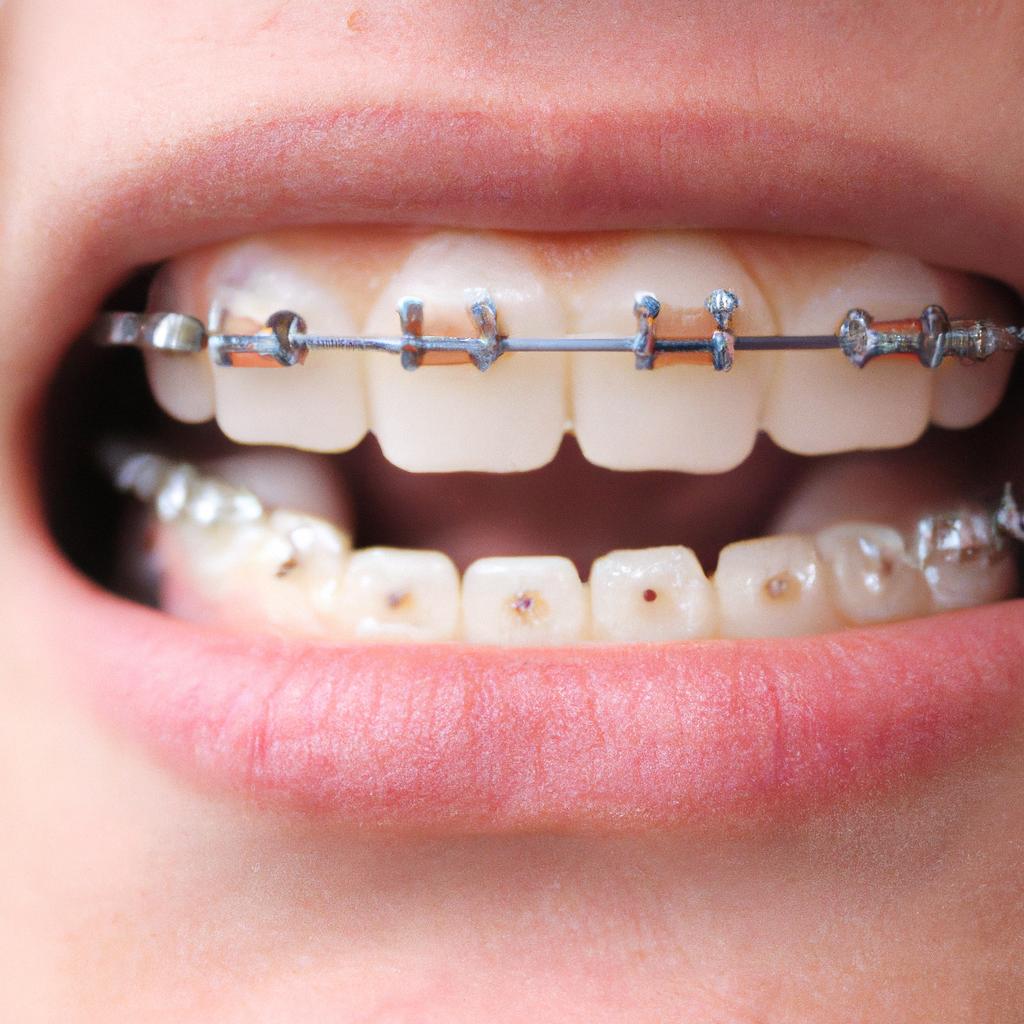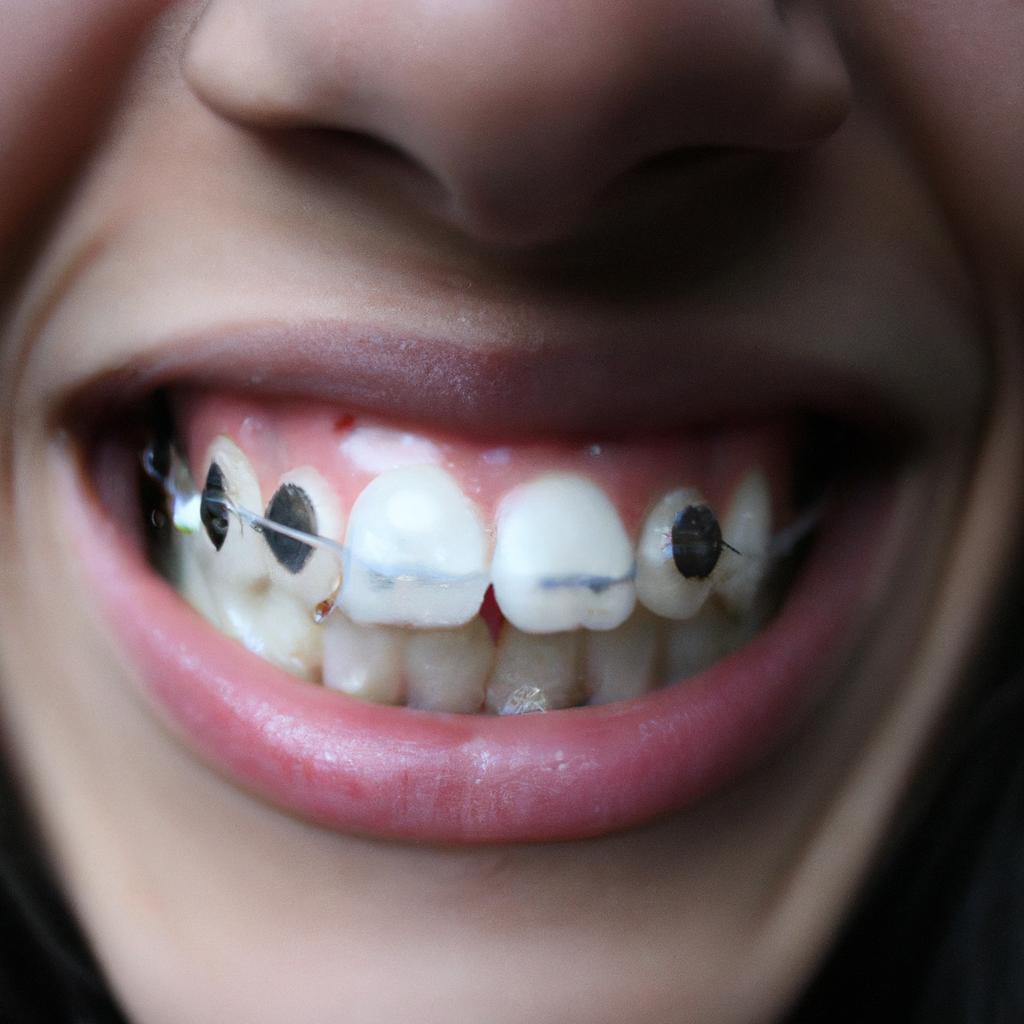Orthodontic Treatment Planning: A Guide to Dental Specialty of Orthodontics
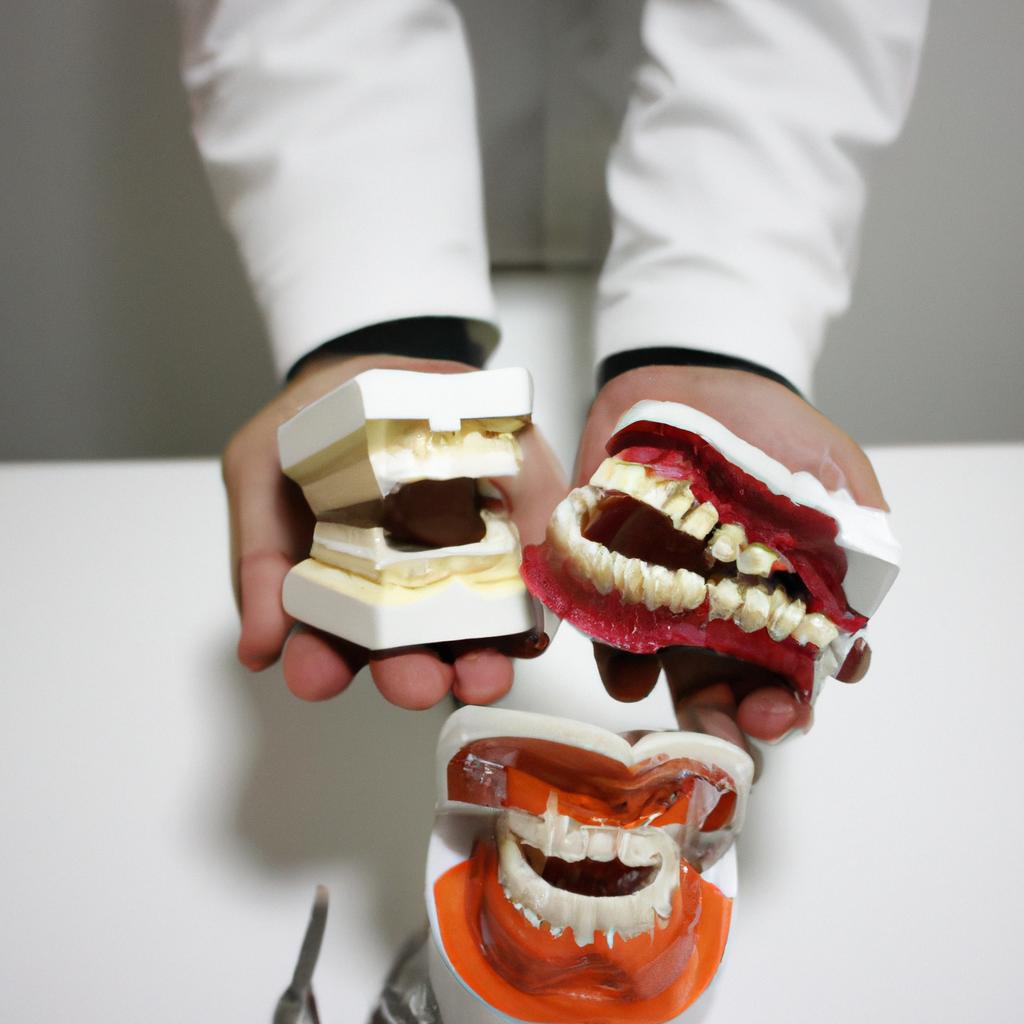
Orthodontic treatment planning is a crucial aspect of the dental specialty of orthodontics, aiming to address various dental and skeletal malocclusions. This comprehensive process involves the evaluation of patients’ oral health conditions, analysis of diagnostic records, establishment of treatment goals, and development of an individualized treatment plan. By employing a systematic approach based on evidence-based principles, orthodontists strive to achieve optimal functional occlusion and aesthetic outcomes for their patients.
For instance, consider a hypothetical case study involving a teenager with severe crowding and misalignment in both the upper and lower arches. The initial step in the orthodontic treatment planning process would involve thoroughly examining the patient’s facial features, teeth alignment, jaw relationship, and overall oral health condition. Diagnostic records such as radiographs, intraoral photographs, impressions or digital scans would be obtained to aid in assessing the severity and complexity of the malocclusion. Following this assessment phase, specific treatment objectives would be established based on factors such as age-appropriate growth potential, patient expectations, and clinical limitations.
Understanding Malocclusion and Its Impact on Oral Health
Malocclusion, or the misalignment of teeth and jaws, is a common dental condition that affects individuals of all ages. To illustrate its impact, let us consider the case of Sara, a 14-year-old girl who presents with an anterior crossbite. This malocclusion has not only affected her appearance but also poses potential risks to her oral health.
Impact on Appearance:
One significant consequence of malocclusion is the negative effect it can have on an individual’s facial aesthetics. In Sara’s case, her anterior crossbite causes her upper front teeth to be positioned behind her lower front teeth when she bites down. This misalignment disrupts the natural harmony between the upper and lower jaw, leading to an unbalanced smile and facial profile.
Emotional Consequences:
The emotional toll associated with malocclusion cannot be underestimated. Individuals like Sara may experience self-consciousness, reduced self-esteem, and social anxiety due to their dental appearance. These emotional consequences can affect various aspects of life, such as confidence in personal relationships and professional interactions.
Table: Emotional Consequences
| Emotions | Examples |
|---|---|
| Embarrassment | Feeling ashamed in social situations |
| Insecurity | Lack of confidence while speaking or smiling |
| Isolation | Avoidance of group activities or photos |
| Bullying | Potential target for teasing or mocking |
Conclusion Transition:
Recognizing the impact that malocclusion can have on both physical appearance and emotional well-being highlights the importance of addressing this dental concern promptly and effectively. A comprehensive orthodontic evaluation becomes crucial in understanding each patient’s unique needs and tailoring appropriate treatment plans accordingly. The subsequent section will delve into this essential step further — evaluating patients comprehensively for optimal orthodontic care.
The Importance of Comprehensive Orthodontic Evaluation
Understanding the Relationship Between Malocclusion and Oral Health
Consider a hypothetical case of a teenager named Sarah who has been experiencing difficulty biting and chewing her food. Upon examination, it is discovered that she has malocclusion, a misalignment of the teeth and jaws. This condition not only affects the aesthetic appearance of her smile but also has significant implications for her oral health.
Malocclusion can lead to various oral health problems if left untreated. Firstly, it can cause difficulties in maintaining proper oral hygiene. Misaligned teeth make it challenging to brush and floss effectively, leading to plaque buildup and an increased risk of tooth decay and gum disease. Additionally, malocclusion can result in excessive wear on certain teeth due to improper distribution of biting forces, which may necessitate restorative dental procedures in the future.
To grasp the impact that malocclusion can have on one’s overall well-being, consider the following emotional responses:
- Frustration: Dealing with constant discomfort or pain caused by malocclusion can be frustrating and affect one’s quality of life.
- Self-consciousness: The visible effects of misaligned teeth may lead individuals to feel self-conscious about their appearance, negatively impacting their confidence and social interactions.
- Anxiety: Worries about potential long-term consequences such as speech difficulties or chronic jaw pain can generate anxiety and stress.
- Relief: Seeking orthodontic treatment provides hope for resolving these concerns and improving overall oral health.
To further illustrate the significance of addressing malocclusion promptly, let us examine a comparison table:
| Consequences | Unresolved Malocclusion | Treated Malocclusion |
|---|---|---|
| Tooth Decay | Increased risk | Reduced risk |
| Gum Disease | Higher likelihood | Lower likelihood |
| Speech Difficulties | Possible | Improved |
| Jaw Pain | Chronic | Alleviated |
Understanding the impact of malocclusion on oral health highlights the importance of comprehensive orthodontic evaluation. By identifying and addressing these issues early on, individuals like Sarah can take proactive steps towards achieving optimal oral health and overall well-being.
Transitioning seamlessly into the subsequent section about “Different Types of Orthodontic Appliances and Their Functions,” it is essential to explore various treatment options that can assist in correcting malocclusion effectively.
Different Types of Orthodontic Appliances and Their Functions
Section H2: Different Types of Orthodontic Appliances and Their Functions
Orthodontic treatment involves the use of various appliances to correct dental irregularities and achieve optimal alignment. Understanding the different types of orthodontic appliances and their functions is crucial for both orthodontists and patients. Let’s explore some common examples below.
One example of an orthodontic appliance is braces, which consist of brackets bonded to each tooth with wires connecting them. Braces apply controlled forces to gradually move teeth into proper alignment. This method has been widely used for years and remains highly effective in treating a variety of orthodontic issues, such as crowded or crooked teeth, gaps between teeth, and bite problems.
Aside from traditional braces, there are also other types of appliances that serve specific purposes during orthodontic treatment. These include:
- Space maintainers: Used when a primary tooth is lost prematurely to ensure adequate space for permanent teeth.
- Retainers: After completing active treatment with braces or aligners, retainers help maintain the achieved results by holding the teeth in place.
- Headgear: Typically worn at night, headgear utilizes external force to guide jaw growth patterns and address skeletal discrepancies.
To further illustrate the functionality of these appliances, consider the following table:
| Appliance | Function |
|---|---|
| Braces | Correct misalignment through controlled pressure |
| Space maintainers | Preserve space after premature loss of primary teeth |
| Retainers | Maintain position of teeth post-treatment |
| Headgear | Guide jaw growth patterns for addressing skeletal discrepancies |
By utilizing these diverse orthodontic appliances strategically, specialists can cater to individual patient needs effectively while achieving desirable outcomes. Furthermore, understanding how each appliance works helps patients make informed decisions about their treatment plans.
Transitioning seamlessly into our next section on “Key Factors to Consider in Orthodontic Treatment Planning,” it is important to note that selecting the most appropriate orthodontic appliance is just one aspect of a comprehensive treatment plan.
Key Factors to Consider in Orthodontic Treatment Planning
In the previous section, we explored the different types of orthodontic appliances commonly used in orthodontic treatment. Now, let us delve into some key factors to consider when planning orthodontic treatment.
To illustrate these factors, let’s consider a hypothetical case study. Meet Sarah, a 14-year-old patient with crowded teeth and a noticeable overbite. After conducting a thorough examination and analyzing her dental records, the orthodontist determines that Sarah would benefit from comprehensive orthodontic treatment involving braces.
When planning orthodontic treatment for patients like Sarah, several important considerations come into play:
-
Malocclusion Severity: The severity of malocclusion plays a crucial role in determining the appropriate course of action. Factors such as overcrowding, spacing issues, or misalignment affect treatment decisions.
-
Growth Stage: The growth stage of the patient is another vital aspect to assess. Timing can be essential when it comes to achieving optimal results. For example, interceptive treatments may be recommended for children to address developing problems before they worsen.
-
Patient Compliance: Successful outcomes depend on patient compliance throughout the treatment process. It is crucial for patients to adhere to oral hygiene practices and follow instructions regarding appliance wear and adjustments diligently.
-
Treatment Duration: The estimated duration of treatment varies depending on individual cases but generally lasts between one to three years. This factor needs careful consideration since longer durations may impact patient motivation and comfort during their orthodontic journey.
Consider this emotional perspective:
- Imagine how thrilled Sarah will feel once she sees her beautifully aligned smile after completing her orthodontic treatment.
- Think about the boost in confidence she will experience as she confidently interacts with others without feeling self-conscious about her appearance.
- Picture Sarah sharing her newfound happiness with friends and family members who have witnessed her transformation throughout the process.
- Reflect on how fulfilling it must be for the orthodontist to witness such positive outcomes and contribute to improving patients’ quality of life.
In the following section, we will explore the role of digital technology in orthodontics, highlighting its impact on treatment planning and execution.
Exploring the Role of Digital Technology in Orthodontics
In the previous section, we explored the essential factors that orthodontists consider when planning treatment for their patients. Now, let’s delve into the role of digital technology in orthodontics and how it has revolutionized the field.
Imagine a patient named Sarah who seeks orthodontic treatment to correct her misaligned teeth. In the past, traditional diagnostic methods such as plaster models and two-dimensional radiographs were used to assess her condition. However, with advancements in technology, orthodontists now have access to three-dimensional imaging techniques like cone-beam computed tomography (CBCT). By using CBCT scans, they can obtain detailed information about Sarah’s dental structures, allowing for more accurate diagnosis and treatment planning.
Digital technology has not only improved diagnostics but also transformed treatment processes. Here are some key ways in which it has enhanced orthodontic care:
- Efficient treatment planning: With computer-aided design (CAD) software, orthodontists can digitally simulate tooth movements and visualize potential outcomes before starting treatment.
- Customized appliances: Digital impressions facilitate the creation of customized aligners or braces tailored specifically to each patient’s needs.
- Enhanced communication: The use of digital platforms enables seamless collaboration between orthodontists and other dental specialists involved in comprehensive care.
- Patient engagement: Interactive virtual tools allow patients like Sarah to actively participate in their treatment process by visualizing their progress and understanding the expected results.
To further illustrate these technological advancements, consider Table 1 below showcasing a comparison between traditional approaches and modern digital solutions:
Table 1: Traditional vs. Modern Approaches in Orthodontics
| Aspect | Traditional Approach | Modern Digital Solution |
|---|---|---|
| Diagnostic tools | Plaster models | Cone-beam computed tomography |
| Treatment plan | Manual calculations | Computer-aided design |
| Appliance design | Standardized appliances | Customized aligners/braces |
| Patient education | Limited visual aids | Interactive virtual tools |
Embracing digital technology in orthodontics has significantly transformed the field, benefiting both practitioners and patients. By streamlining treatment planning processes, providing personalized care, improving communication, and empowering patients to actively engage in their treatment journey, digital advancements have revolutionized orthodontic practices.
Looking ahead, it is crucial for orthodontists to stay updated with emerging technologies and continue harnessing their potential. Understanding these aspects is essential for ensuring the success and sustainability of orthodontic treatments.
Long-Term Maintenance and Follow-Up in Orthodontic Treatment
Transitioning from the previous section on digital technology, orthodontics has witnessed significant advancements in treatment techniques. These advancements have revolutionized the field and provided orthodontists with more efficient and effective methods to achieve optimal results for their patients.
To illustrate this point, let’s consider a hypothetical case study of a teenage patient named Sarah who requires orthodontic treatment to correct her misaligned teeth. With traditional braces, Sarah would have needed frequent visits to adjust wires and brackets manually. However, thanks to modern technological innovations, orthodontists now have access to various advanced treatment techniques that can enhance the overall experience for patients like Sarah.
One such technique is Invisalign aligners, which are clear plastic trays custom-made for each individual. They provide an aesthetic alternative to traditional braces while still effectively correcting dental issues. Additionally, lingual braces offer another discreet option by being placed on the backside of the teeth. These alternatives allow patients like Sarah to feel more confident during treatment without compromising effectiveness.
The advancements in orthodontic treatment techniques also bring several benefits:
- Reduced discomfort: Newer techniques often involve gentler forces applied to teeth, resulting in reduced pain or discomfort experienced by patients.
- Shorter treatment time: Advanced technologies allow for faster tooth movement and accelerated treatment times compared to conventional approaches.
- Improved oral hygiene: Some newer treatments make it easier for patients to maintain good oral hygiene habits as they enable better access for brushing and flossing.
- Enhanced predictability: Digital simulations and 3D imaging technology aid in creating precise treatment plans, increasing accuracy and better predicting final outcomes.
In summary, advancements in orthodontic treatment techniques have transformed how practitioners approach corrective procedures. Patients like Sarah can benefit from these innovations through shorter treatment times, increased comfort levels, improved aesthetics, and enhanced predictability of outcomes. As technology continues to advance at a rapid pace within the orthodontic field, it is crucial for practitioners to stay updated and utilize these techniques to deliver optimal results for their patients.



